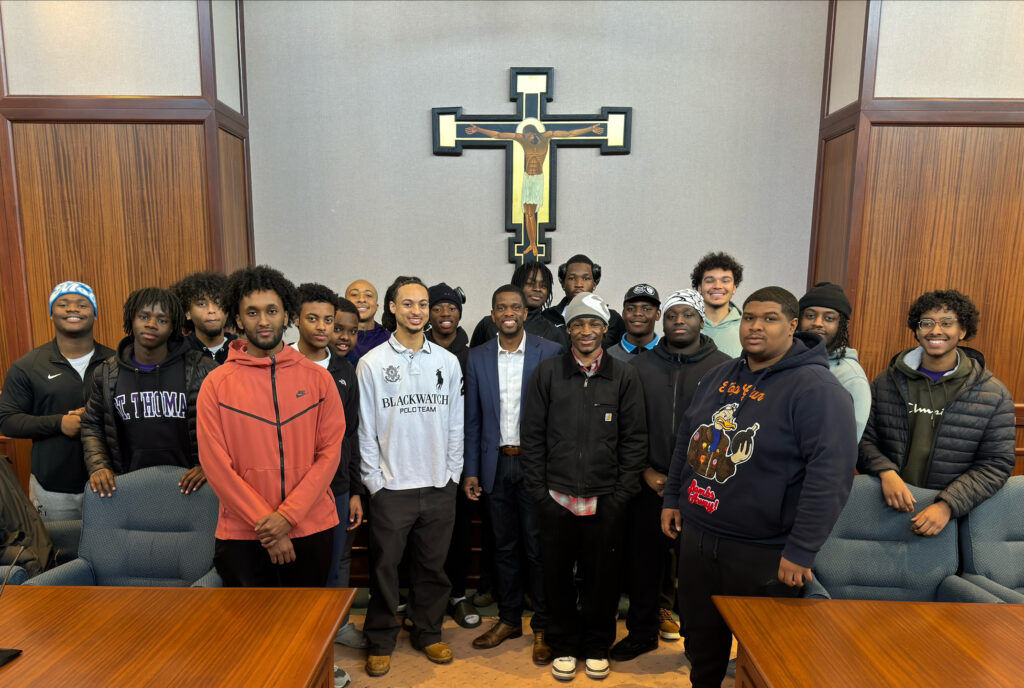CAM colloquium to examine the topic ‘Nurture, Nature and Mathematics Too!’ Oct. 19
The Center for Applied Mathematics again will offer a colloquium series for fall semester. All presentations will be held at 3 p.m. in 3M Auditorium, Owens Science Hall.
Listed below are the three upcoming sessions.
“Nurture and Nature and Mathematics Too!”
Wednesday, Oct. 19
Speaker: Daniel Silversmith of the Minnesota Department of Corrections
This talk will outline opportunities for mathematically trained students that are present in various areas of psychology. Academic and applied careers will be discussed. The “Holy Trinity” of teaching, research and practice will be explained. Current “real-life” research questions and possible solutions will be noted.
“A Simple Introduction to Digital Image Compression”
Wednesday, Nov. 9
Speaker: Dr. Patrick Van Fleet, Mathematics Department, University of St. Thomas
Have you ever wondered how digital images are compressed for transmission over the internet? One of the most common compression standards is provided by the Joint Photographic Experts Group (these are the images that end in .jpg). This standard was revised in 2000 and now it makes heavy use of a mathematical tool called wavelets that transform the image matrix into a new matrix.
The new matrix stores the important image information using a small number of elements and the remaining elements are either zero or close to zero. To complete the compression process, thresholding is applied to convert some of the near zero values to zero. Finally, the data are encoded into the compressed file.
Van Fleet will begin this talk with a discussion of how digital images are stored on a computer. He then will build an elementary wavelet transform (here’s a chance to implement some of the matrix algebra students have learned in Math 210) and next construct simple thresholding and encoding tools that can be used to compress digital images.
This will be a hands-on talk because certain members of the audience will have access to laptops and will perform image compression. While participants will not recreate the JPEG standard in this talk, it will be easy to use tools to describe how the standard is constructed.
“Fractal Modeling and the Stock Market”
Wednesday, Dec. 7
Speaker: Brandon Rowekamp, University of St. Thomas
Fractal geometry, in contrast to the more familiar geometry of circles and other simple geometric shapes, is a geometry that describes sudden changes and infinite complexity. Fractals are so complex that their dimensions are between two numbers, so for example a fractal curve would have a dimension between 0 and 1.
Another important feature of fractals is that of self-similarity, which, roughly speaking, means that the fractal is composed of pieces that resemble itself, only smaller. This talk will further introduce and explain the basic concepts of fractals.
Though fractals seem to be a mathematical curiosity at first, a large number of applications for fractals have been found in diverse fields. In particular, the stock market seems to have a fractal nature, since it is characterized by constant and sometimes drastic change. Additionally, stock market data taken over long periods of time resemble data taken over shorter periods of time, suggesting self-similarity. This talk will give concrete reasons to believe that the stock market follows a fractal pattern (such as approximations of stock market dimension) and then presents various modeling techniques that use fractals to model the stock market.
Visit the Center for Applied Mathematics Web site for more information.






